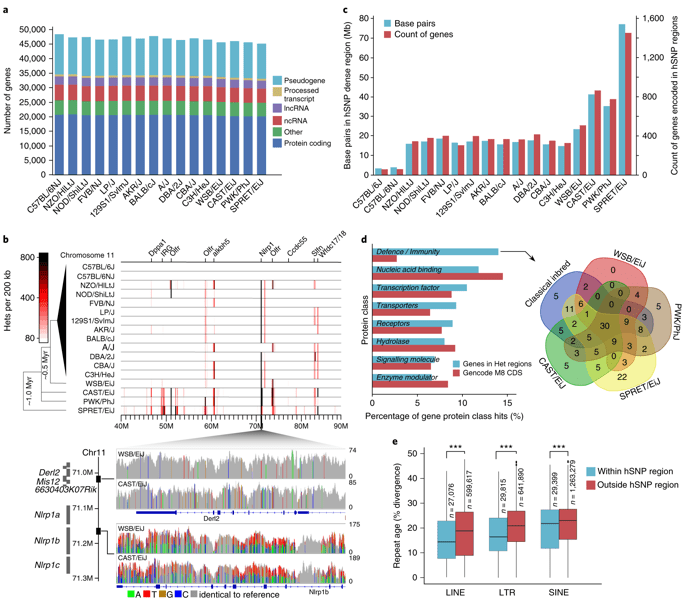
Article | Nature Genetics | Published: 01 October 2018
Jingtao Lilue, Anthony G. Doran, Ian T. Fiddes, Monica Abrudan, Joel Armstrong, Ruth Bennett, William Chow, Joanna Collins, Stephan Collins, Anne Czechanski, Petr Danecek, Mark Diekhans, Dirk-Dominik Dolle, Matt Dunn, Richard Durbin, Dent Earl, Anne Ferguson-Smith, Paul Flicek, Jonathan Flint, Adam Frankish, Beiyuan Fu, Mark Gerstein, James Gilbert, Leo Goodstadt, Jennifer Harrow, Kerstin Howe, Ximena Ibarra-Soria, Mikhail Kolmogorov, Chris J. Lelliott, Darren W. Logan, Jane Loveland, Clayton E. Mathews, Richard Mott, Paul Muir, Stefanie Nachtweide, Fabio C. P. Navarro, Duncan T. Odom, Naomi Park, Sarah Pelan, Son K. Pham, Mike Quail, Laura Reinholdt, Lars Romoth, Lesley Shirley, Cristina Sisu, Marcela Sjoberg-Herrera, Mario Stanke, Charles Steward, Mark Thomas, Glen Threadgold, David Thybert, James Torrance, Kim Wong, Jonathan Wood, Binnaz Yalcin, Fengtang Yang, David J. Adams, Benedict Paten & Thomas M. Keane
Abstract
We report full-length draft de novo genome assemblies for 16 widely used inbred mouse strains and find extensive strain-specific haplotype variation. We identify and characterize 2,567 regions on the current mouse reference genome exhibiting the greatest sequence diversity. These regions are enriched for genes involved in pathogen defence and immunity and exhibit enrichment of transposable elements and signatures of recent retrotransposition events. Combinations of alleles and genes unique to an individual strain are commonly observed at these loci, reflecting distinct strain phenotypes. We used these genomes to improve the mouse reference genome, resulting in the completion of 10 new gene structures. Also, 62 new coding loci were added to the reference genome annotation. These genomes identified a large, previously unannotated, gene (Efcab3-like) encoding 5,874 amino acids. Mutant Efcab3-like mice display anomalies in multiple brain regions, suggesting a possible role for this gene in the regulation of brain development.
[ Read more ]